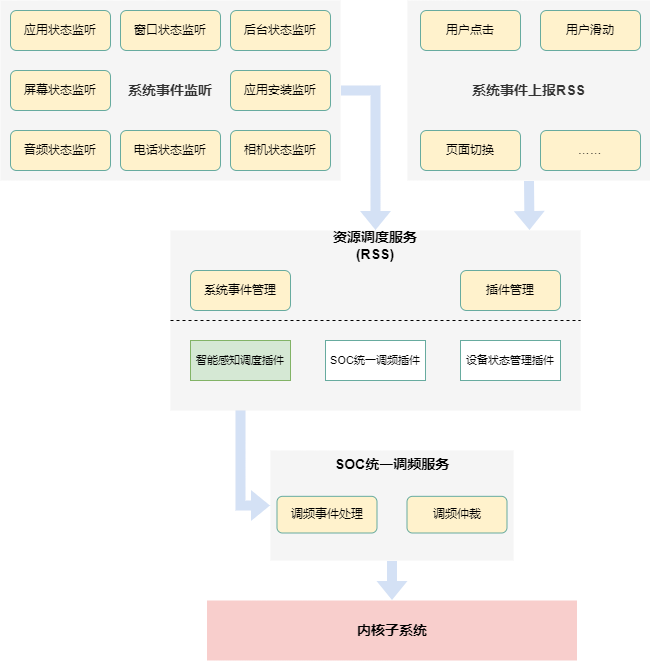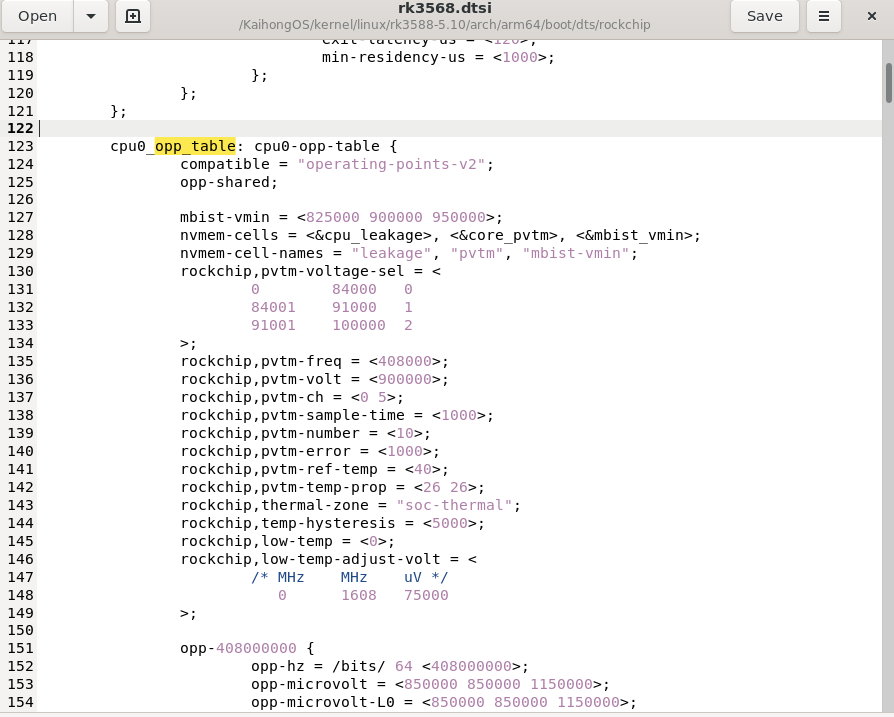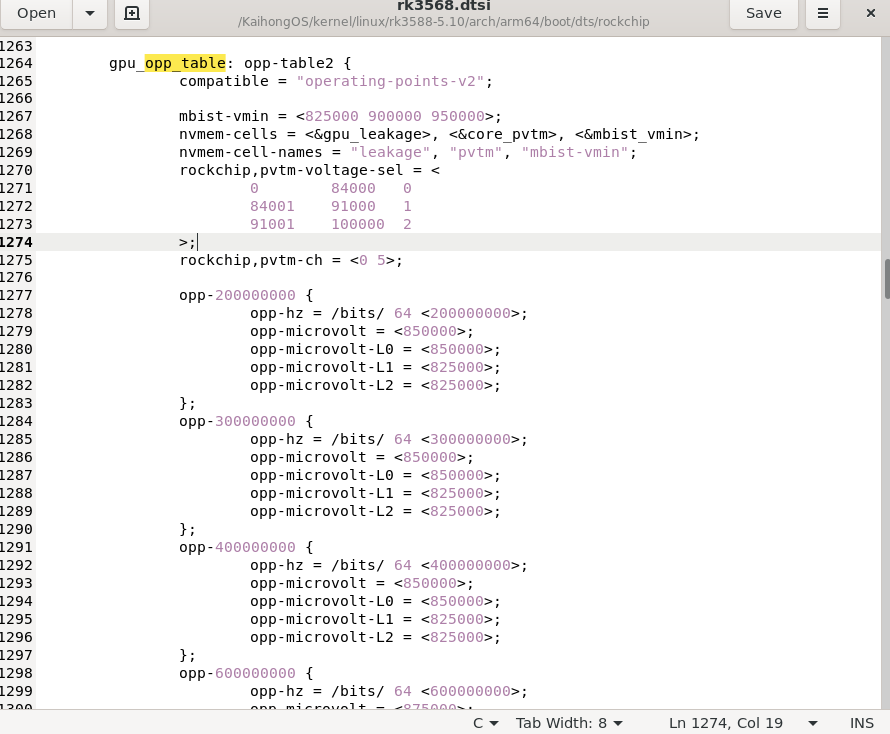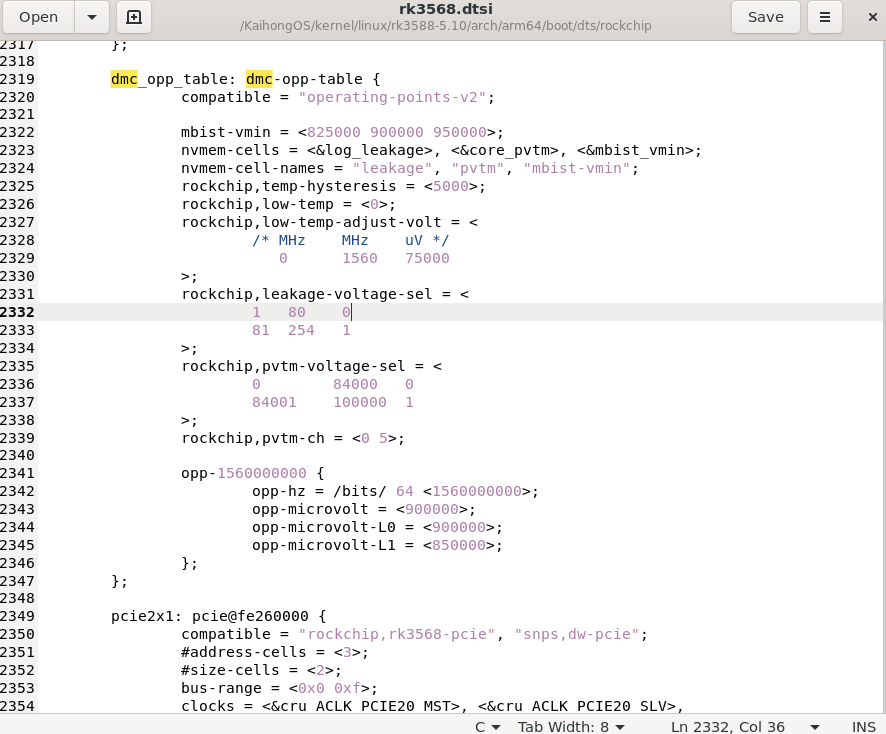 )
) )
) )
) )
) )
) luginSwitch>();
luginSwitch>(); luginMgr::Init success!");
luginMgr::Init success!"); ostTask([this, resType, value, payload] {
ostTask([this, resType, value, payload] { ispatchResource(const std::shared_ptr<ResData>& resData)
ispatchResource(const std::shared_ptr<ResData>& resData) ostTask(
ostTask( ispatchResource(const std::shared_ptr<ResData>& data)
ispatchResource(const std::shared_ptr<ResData>& data) erfRequest`进行提频操作:
erfRequest`进行提频操作: erfRequest(int32_t cmdId, const std::string& msg)
erfRequest(int32_t cmdId, const std::string& msg) oFreqActions`,向`SocPerfHandler`发送事件,进行调频事件处理和调频仲裁。
oFreqActions`,向`SocPerfHandler`发送事件,进行调频事件处理和调频仲裁。 oFreqActions(std::shared_ptr<Actions> actions, int32_t onOff, int32_t actionType)
oFreqActions(std::shared_ptr<Actions> actions, int32_t onOff, int32_t actionType) rocessEvent`根据传入的事件ID`INNER_EVENT_ID_DO_FREQ_ACTION`进行调频事件的处理。
rocessEvent`根据传入的事件ID`INNER_EVENT_ID_DO_FREQ_ACTION`进行调频事件的处理。 rocessEvent(const AppExecFwk::InnerEvent:
rocessEvent(const AppExecFwk::InnerEvent: ointer &event)
ointer &event)| 欢迎光临 OpenHarmony开发者论坛 (https://forums.openharmony.cn/) | Powered by Discuz! X3.5 |